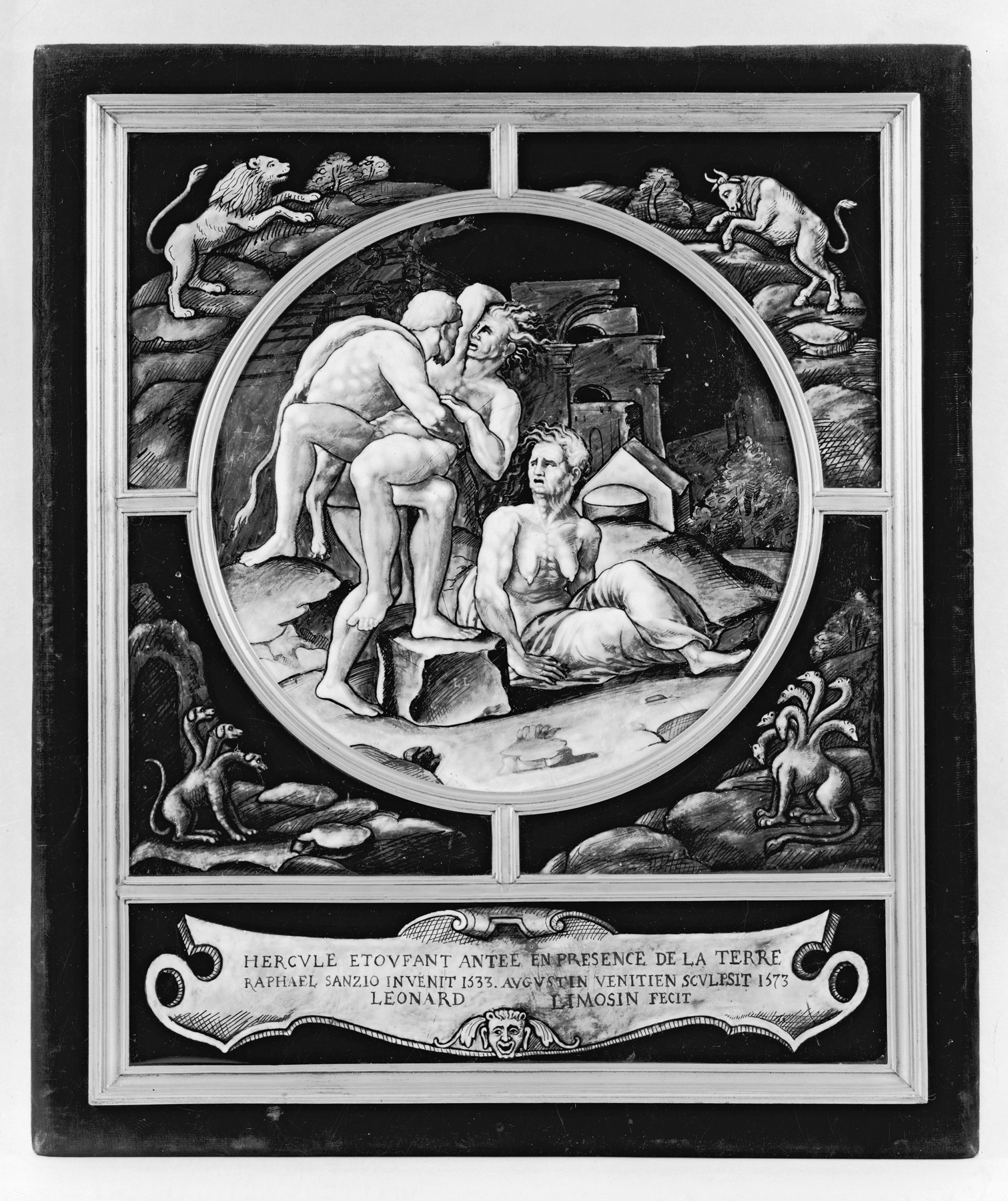Medallion with Hercules and Antaeus
(Renaissance Europe )
The exploits of the ancient hero Hercules were valued as exemplifying great physical strength and virtuous purpose combined with the occasional human failing. They were popular at the French court, because the royal family claimed the hero as an ancestor. Of Hercules's Twelve Labors, undertaken as penance after he killed his children in a fit of madness, the most often depicted was his triumph over the Libyan giant Antaeus, who drew his stupendous strength from contact with his mother, the earth-goddess Gaea. Here, in a composition based on an engraving after a drawing attributed to Raphael, Hercules, wearing a lion's skin, lifts the giant off the ground and crushes him. The crudely drawn beasts in the corners represent the Lernaean Hydra, the Cretan Bull, the three-headed dog Cerberus, and the Nemean Lion that Hercules also overcame in his Labors.
Provenance
Provenance (from the French provenir, 'to come from/forth') is the chronology of the ownership, custody, or location of a historical object.
Léon Decloux [date and mode of acquisition unknown]; Sale, Paris, April 27-8, 1891; Dr. Emile Allain, Paris [date and mode of acquisition unknown]; Seligmann Brothers, Paris [date and mode of acquisition unknown]; Henry Walters, Baltimore, May 16, 1906, by purchase; Walters Art Museum, 1931, by bequest.
Geographies
France, Limoges (Place of Origin)
Measurements
Framed H: 14 3/4 x W: 12 in. (37.5 x 30.5 cm); Diam of roundel: 8 5/16 in. (21.1 cm)
Credit Line
Acquired by Henry Walters, 1906
Location in Museum
Accession Number
In libraries, galleries, museums, and archives, an accession number is a unique identifier assigned to each object in the collection.
In libraries, galleries, museums, and archives, an accession number is a unique identifier assigned to each object in the collection.
44.283


